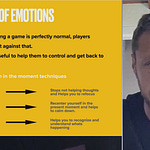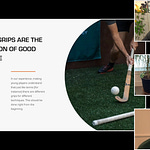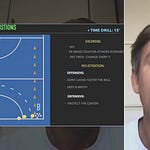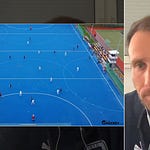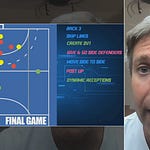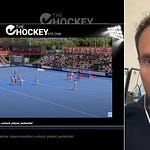After reviewing this masterclass, one standout lesson emerges for every field hockey coach: involve your players actively in the video analysis process. It’s easy to slip into the habit of making video review a coach-driven lecture, showing a curated package of clips, listing out what went right or wrong, and expecting learning to happen from passive viewing. What we’re reminded here, emphatically and repeatedly, is that true player development and game understanding only come when players are thinking, questioning, and exploring video themselves.
Why is this so critical? When players are involved, being asked to interpret situations, recognize patterns and errors, and propose solutions, they begin to own their learning. This cultivates hockey intelligence on the pitch. As we know, once the match starts and the pressure is on, players need to be able to read situations and make decisions without waiting for coach input. The video room becomes a rehearsal studio for exactly that scenario.
Here’s how you can put this into day-to-day coaching:
Personalize the clips: Don’t just show a highlight reel or errors reel featuring a handful of players. Use a mix of team examples and personalized, position-specific sequences. Importantly, make clear that every clip is for everyone to learn from—not just the player in it.
Shift the format: Replace part or all of your pre/post-game video briefings with small group tasks. Ask each group to review a sequence and come up with what went well, what didn’t, and what could be done differently. Have them present back to the team.
Debate and reflect: Instead of giving straightforward answers (“You should have been here,” “That’s the wrong pass”), use Socratic questions. Let players debate tactics, options, and individual decisions. Sometimes the best learning comes from player-to-player exchanges, moderated by the coach.
Integrate video everywhere: Bring iPads to the pitch, use quick replays between drills, and reference video examples as cues for individual technical work. As described, “I use video every time, everywhere…on my training sessions, I have three iPads on the field with the clips I want to show.”
Keep it short: Factor in attention spans. Limit video sessions to 15 minutes. One strong sequence with a focused debate is more valuable than thirty minutes of rolling tape and lost focus.
This shift isn’t just about efficiency or making sessions more interactive. It’s about helping players develop the cognitive tools to interpret situations and make tactical decisions independently. As Sebastien Roland puts it:
“If you don’t take the time to make your players understand that the video can really help them, for me, it’s wasting of time… Let the players think, I mean, ask them questions, let them give their opinion, let them recognize situations, let them find solutions by themselves.”
This is not new advice, but it’s a lesson we all seem to need reminding of every season. Making video sessions truly interactive is how we create not just technically skilled players, but thinking hockey players.
Why You’ll Want to Watch the Full Video
If you’re a coach who feels the burden of maximizing every minute of training and meeting time, this is absolutely a session you’ll want to engage with. The approaches discussed here challenge some of the typical video routines seen in hockey and at the same time offer practical, no-fuss ways to raise your team’s match IQ. You’ll find discussion about using AI and stats without letting it drown your coaching instinct, advice on individualizing development plans linked to video, and strategies for analyzing the opposition in detail—none of which is just theory, but all grounded in field-proven workflow.
For a real step-change in your use of video and analytics, dive into the full workshop or read (paid subscribers only) the extended analysis that follows ↓ . The most valuable changes you make this season could start with how you approach video this week.






